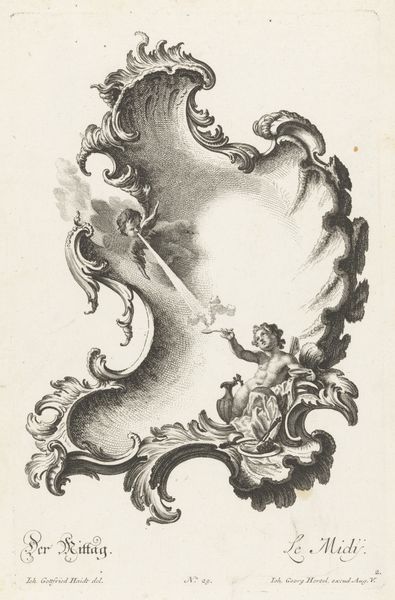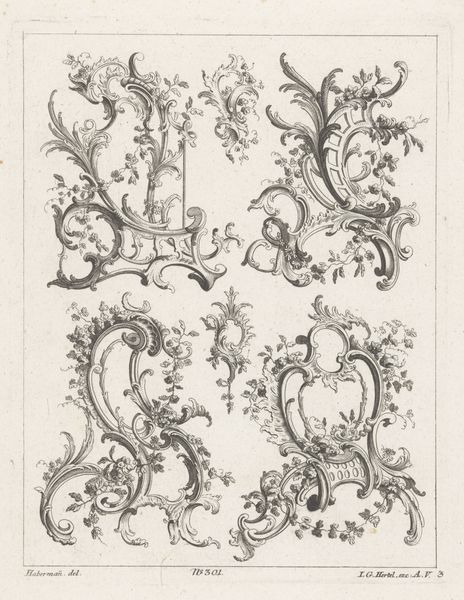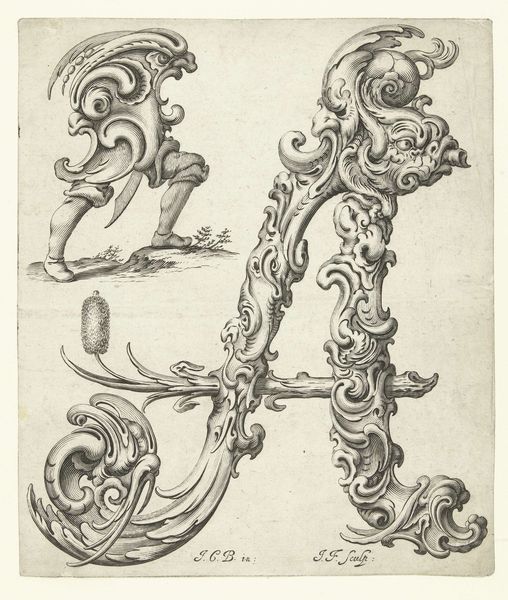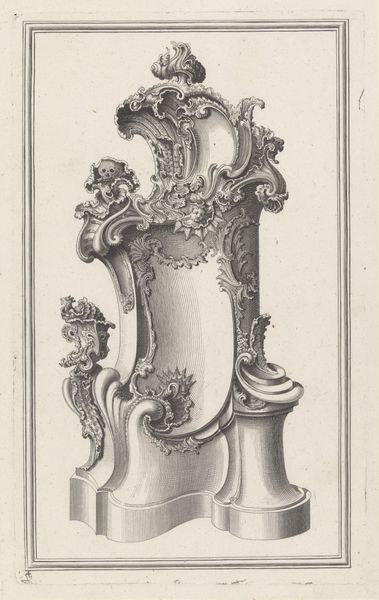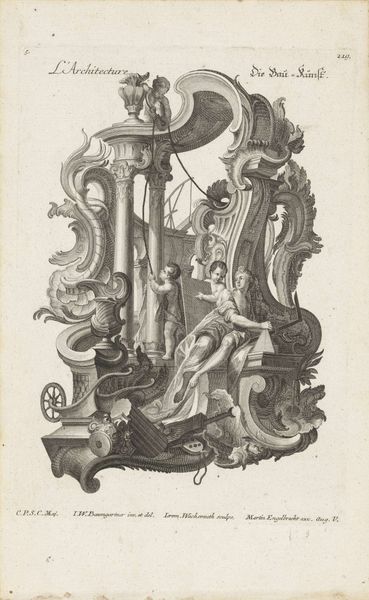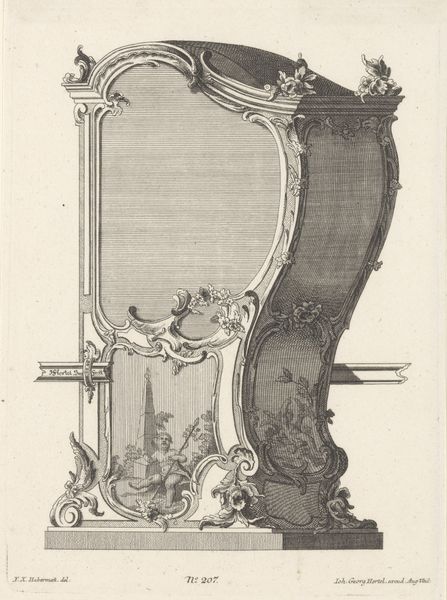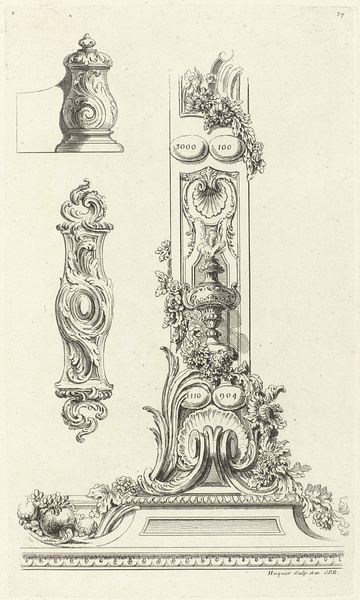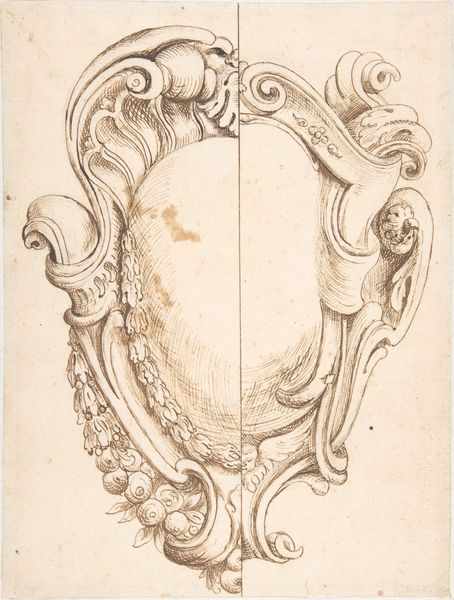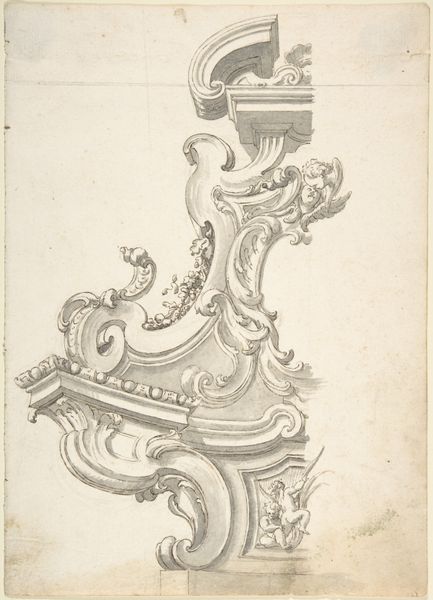
drawing, print, ink, engraving
#
drawing
# print
#
pen illustration
#
form
#
ink
#
ink drawing experimentation
#
line
#
pen work
#
sketchbook drawing
#
engraving
#
rococo
Dimensions: height 284 mm, width 175 mm
Copyright: Rijks Museum: Open Domain
Editor: Here we have "Sierkan met slakkenhuis," or "Ornamental jug with snail shell," created between 1705 and 1775 by Hieronymus Sperling. It's rendered in ink using engraving and drawing techniques. The detail is astounding, and it has a very fanciful, almost whimsical feel to it. What stands out to you when you look at this piece? Curator: This drawing immediately places itself within the context of the Rococo era. Rococo, beyond just being a style, represented a societal shift, a turn towards aristocratic leisure and pleasure. Notice the emphasis on ornamentation for its own sake, the sinuous lines, and the embrace of natural motifs— all hallmarks of Rococo. Does this ornamental jug seem purely decorative, or could it have served a deeper purpose, socially? Editor: I suppose it might showcase the patron’s wealth, this kind of excessive design definitely speaks to status and power. It almost seems to satirize luxury because it is quite over the top. Curator: Precisely. Engravings like this were not simply aesthetic exercises. They functioned as design templates, circulating ideas amongst craftsmen and patrons. Imagine workshops referencing Sperling’s drawing when creating silverwork or furniture. The jug becomes a symbol, less about utility and more about aspirational design. How does knowing that it served as a template affect your interpretation? Editor: It changes my perception; it transforms from a playful drawing into a piece that has significant social weight. These motifs will pop up throughout society. I now wonder what that jug says about those social structures. Curator: Indeed. Art like this makes us consider who designs the spaces and objects around us and who is it intended for. Hopefully you’ll continue to be sensitive to the complex ways art reflects, reinforces, or even subverts societal values. Editor: Definitely something to consider, thank you!
Comments
No comments
Be the first to comment and join the conversation on the ultimate creative platform.

